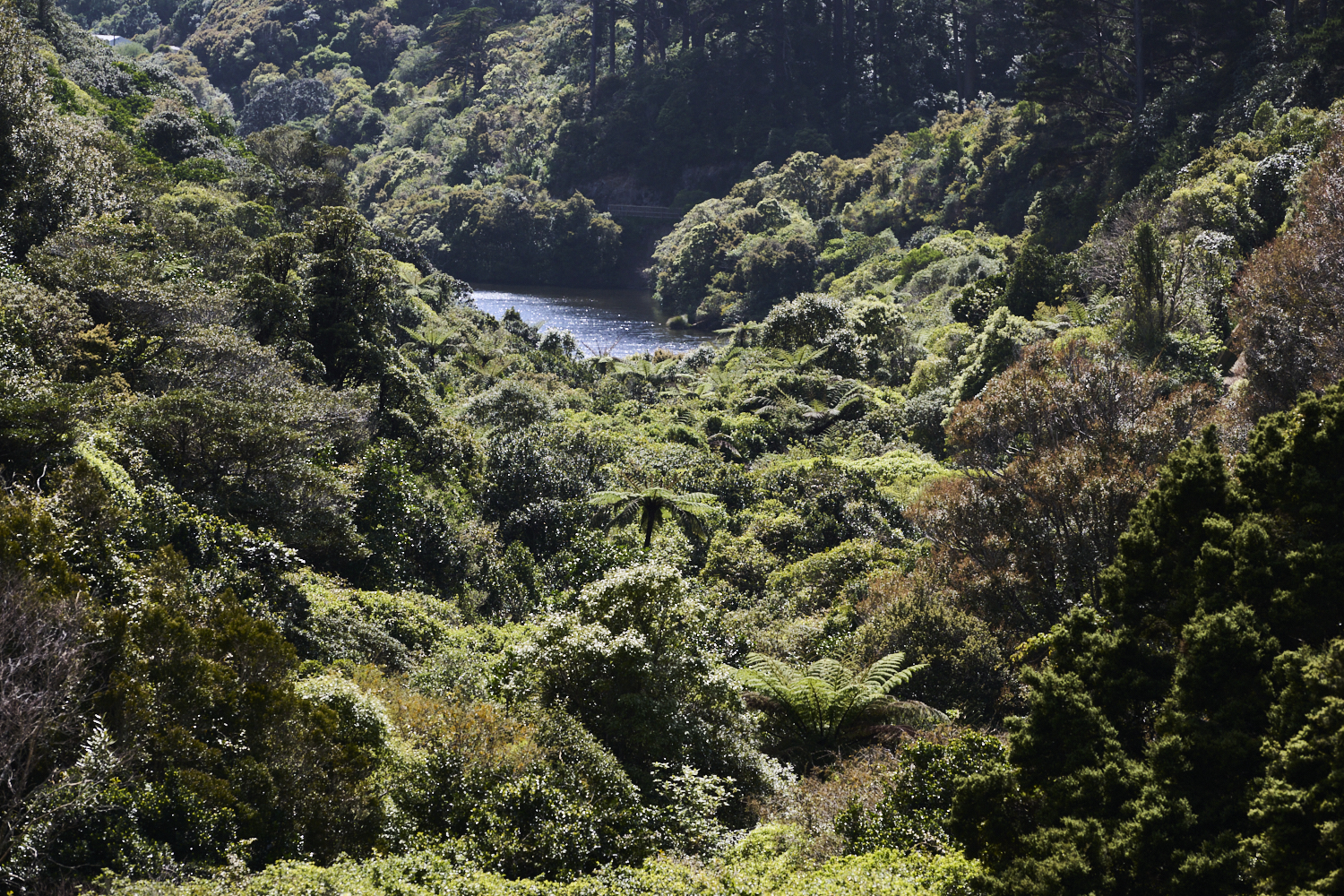Taking personal action on climate change is one of the best defences against a sense of despair. Immediate action to increase the area and integrity of New Zealand’s indigenous forests will reduce atmospheric carbon dioxide, start the process of healing scarred landscapes, help restore our unique biodiversity, and provide hope for the people of Aotearoa.
Top Header Image: ©Al Guthrie/Pure Advantage
New Zealand’s indigenous forests are vital, long-term stores of carbon. On average, mature indigenous forest stores 925 tCO2 per hectare but this can extend to as much as 1300 tCO2 per hectare. Our forest carbon stocks are comparable to tropical moist forests and cool temperate forests elsewhere. Temperate forests store more carbon than at any other latitude. New Zealand’s indigenous forests are slow-growing, so they draw down atmospheric CO2 at a slower rate than plantations of exotic pines, when grown naturally. However, recent research suggests that when planted and given the right conditions and attention, indigenous forests can absorb a respectable 10.0 to 16.4 tCO2 per hectare per year (for the first 50 years and more after that). They are also long-lived so they absorb carbon for centuries, which means that the process of removing atmospheric CO2 is sustained.
Landowners can contribute through protection of existing forests and restoration of new forests, especially in the places that are already primed to naturally regenerate. Protection of existing forests is about preserving the carbon stock we already have. Old-growth forests are strongly biodiverse – they are usually resilient ecosystems that have been fine-tuned to the site conditions over hundreds of years. Legal protection and control of smothering weeds and browsing animals is essential to avoid canopy death and to ensure the forest floor seedlings and saplings are numerous and diverse to be able to rapidly recolonise canopy gaps wherever large trees fall over – this is the next generation of canopy trees in waiting. Further, these existing forests are our links to the past and contain the propagules (especially plant and fungal) for our new forests.
Forest restoration should occur on the lands that can confer the greatest benefits for biodiversity, landscape resilience and carbon storage, and should be at the catchment-scale. These will often be the erosion-prone uplands that are marginal for pastoral agriculture and could be planted or allowed to regenerate naturally. Upland regenerating forests slow water’s passage to the lowlands and remove contaminants. They provide floral resources for honey-bees and provide habitats to native birds and insects. Herbivore control is even more important at this stage of forest development. Planted trees need to be protected from browsers and naturally regenerating forest requires sustained control because otherwise the whole trajectory of the re-growing forest can be changed in favour of unpalatable species with lower potential carbon storage when viewed over centuries – compare unpalatable tree fern forests with multi-layered beech-podocarp forests, for example.

Establishing new native forests, Lake Hāwea
©DavidNorton
The simplest way to establish new forests is to focus on areas surrounding existing forests. Proximity to existing trees is the most significant success factor for natural regeneration so moving a fence out, including an adjacent paddock or neighbours working collectively across adjacent land blocks to support natural regeneration (and share pest control costs) can be very successful. To speed succession or ensure that higher value (for carbon and biodiversity) canopy species are present, enrichment planting can be undertaken and even tended in suitable canopy gaps – once these trees bear fruit and seed they will populate the whole hillside.
Currently the Emissions Trading Scheme incentivises pine forest because the yield per hectare is so high. It may be that a biodiversity credit scheme could support the current financing gap between these short-term carbon gains (pines) and the suite of long-term ecosystem service benefits (regenerated indigenous forest). Incentivising natural regeneration and planting of indigenous forests through lowering barriers to participation such as reducing the fees involved, would significantly improve our biodiversity, steadily sequester carbon from the atmosphere over centuries and weave resilience into fragile landscapes.
”The key is protection of existing forests and restoration of new forests, especially in the places that are already primed to naturally regenerate.
To do this, evidence is first required that a given land area has the potential to regenerate indigenous forest. Then, the owner needs to demonstrate a long-term commitment to grow an indigenous forest via legal protection (e.g. a QEII National Trust covenant), thus providing a guarantee that the land will be managed for this purpose. Funding can then be directed to projects with confidence. Audits should be on action taken (such as preventing fire or herbivore browsing), rather than a hectare-by-hectare determination of incremental achievement of some hypothetical biodiversity or carbon threshold. As long as the block as a whole makes progress, there’s a net gain in biodiversity, as well as landscape resilience and carbon storage.
To achieve the multiple benefits of diverse indigenous forests the country will need to invest in this and on-shore investment in resilient catchments managed for multiple values is surely preferable to off-shore investment for carbon only?
Dr. Fiona Carswell is a contributor to the Recloaking Papatūānuku initiative, an urgent and ambitious programme to restore our indigenous forests, building on the Ō Tātou Ngahere partnership with Tāne’s Tree Trust. Find out more about the initiative here and sign up to join the movement.




Leave a comment